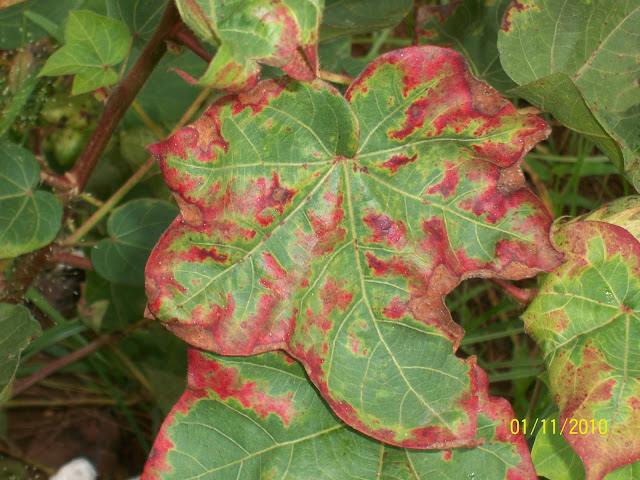Function and Deficiency symptoms of Magnesium in plants
 |
Function of magnesium in plants
i. Magnesium is the center and a constituent of the chlorophyll molecule without which photosynthesis would not occur. So, it is involved in photosynthesis. Besides, several photosynthetic enzymes present in chlorophyll require magnesium as an activator.
Many of the enzymes involved in carbohydrate metabolism require magnesium as an activator. Magnesium is also an activator for those enzymes involved in the synthesis of the nucleic acids (DNA, RNA) from nucleotide polyphosphates.
ii. It plays a role in organic acid metabolism. Mg helps in synthesis of fat and increases oil content in oilseed crops when it combines with sulphur.
iii. Being a constituent part of polyribosornes, it helps in protein synthesis in the plants.
iv. Mg is also a constituent part of chromosomes.
v. It plays a catalytic role of numerous enzymes concerning carbohydrate metabolism, phosphate transfer and decarboxilations.
Deficiency symptom of magnesium in plants
i. Since magnesium is a constituent of the chlorophyll molecule, the most common symptom of magnesium deficiency in green plants is extensive interveinal chlorosis of the leaves.
ii. Yellowing is apparent first in the basal leaves, and as the deficiency becomes more acute, eventually reaches the younger leaves. The base to tip order of appearance of deficiency symptoms indicates that magnesium, like nitrogen and phosphorus, is mobile in the plant. The veins of chlorotic leaves remain green.
iii. Chlorosis is often followed by the appearance of anthocyanin pigments in the leaves. At a more acute stage in the deficiency, that is, following chlorosis and pigmentation, necrotic spotting may be observed.
iv. Acute deficiency of magnesium also causes premature defoliation. In maize, the leaves develop intravenial white strips; in cotton they change to purplish red, veins remaining dark green; in soybean they turn yellowish and in apple trees brown patches (blotches) appear on the leaves.
Toxicity of over supply of magnesium in plants
An abundant supply of magnesium caused to some extent a depression of internal phloem development and an increase in size of parenchymatous cells adjacent to the endodermis.